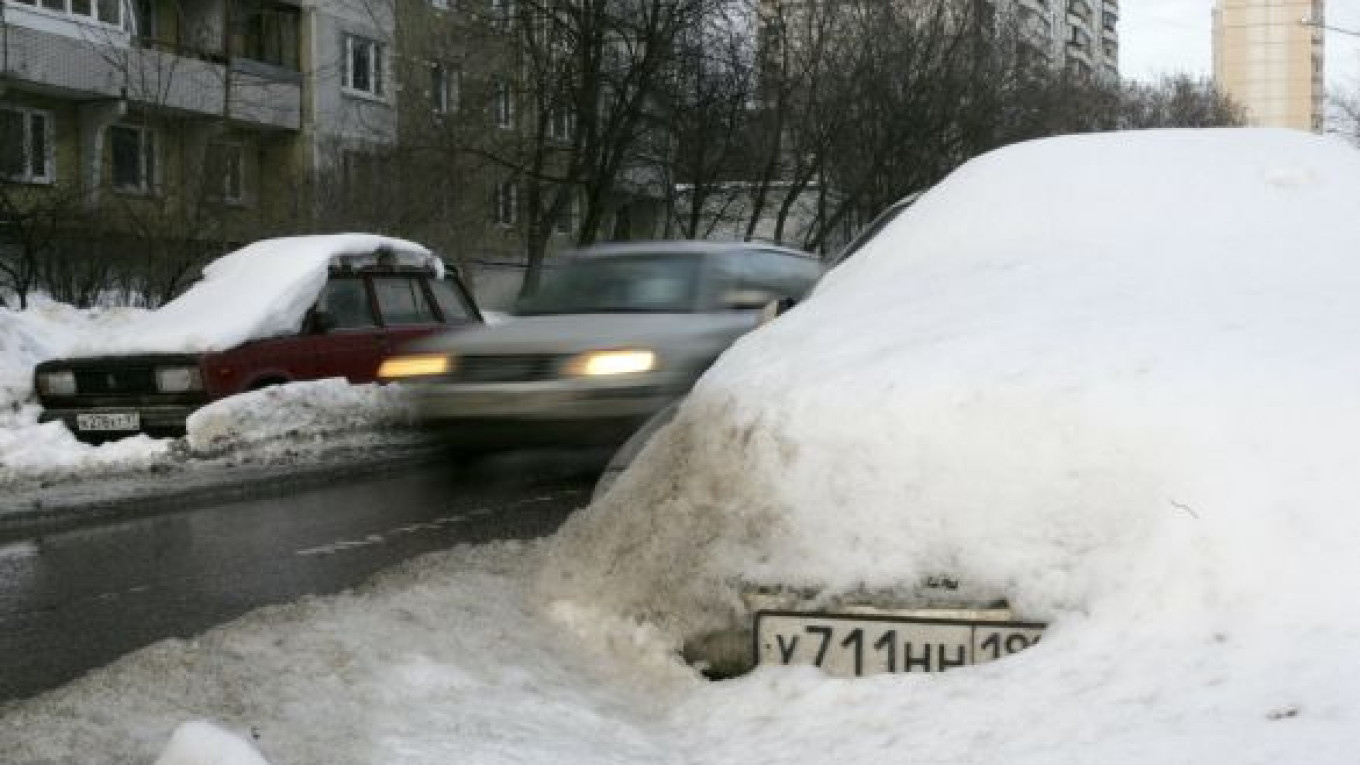The government intends to pump $6 billion into the domestic auto industry as part of a $60 billion, 10-year strategy aimed at salvaging the faltering sector, a government official said Wednesday.
The strategy, which is to be approved at a Cabinet meeting Thursday, calls for the state to provide 24 billion rubles ($800 million) of the 55 billion rubles that the sector is expected to need this year, as well as 39 billion rubles of the 135 billion rubles needed in 2011, and 44 billion rubles in 2012, the official said at a pre-Cabinet briefing, speaking on customary condition of anonymity.
The state may also make 150 billion rubles available over the next decade to buy foreign assets, the official said.
In all, the Cabinet's draft strategy estimates that the car sector will need to raise 630 billion rubles to stay afloat over the next 10 years, including 330 billion rubles to modernize technology and 190 billion rubles to build up component-producing capacity.
All international partnerships in the industry will keep foreign ownership at 50 percent or under, the official said.
Preservation of current import duties through 2015 or 2016 is "one of the conditions for the strategy to succeed," the official said.
"The Russian car industry will be able to compete with foreign carmakers in 2015 or 2016, and the measures of customs protection will lose their current importance," the official said.
The lion's share of the state support will be distributed from 2012 to 2014 to fund research and development and to subsidize interest rates for loans so companies pay no more than 7 percent, the official said.
The draft strategy, a 100-page document that was leaked to the media this week, outlines in detail the grandiose plans for Russia's carmakers and their foreign partners and predicts complete death of the industry in as little as three years if no action is taken.
The plan starts off diplomatically, describing the "situation in the domestic auto industry" as "ambiguous." It says the arrival of foreign carmakers "did not form the preconditions for creating economically reasonable, modern auto component industries," while government policies that attracted investment into the car sector "were not enough to develop it fully."
The state of the industry, especially in the passenger car segment, is "critical" and will completely disintegrate in three to five years unless the government takes "decisive systematic measures," it says.
The report calls the technological level of Russian cars "in line with international standards," but "lagging by four to seven years in using those standards," citing as examples fuel efficiency, safety, comfort and emissions.
Russian car producers invest only 1 percent of their earnings into research and development while the global average is 4 to 5 percent, it says. Investment into R&D must amount to at least 44 billion rubles per year, it says.
Moving to component makers, it says the industry is practically "nonexistent" and needs to be created from scratch by rebuilding existing capacities or attracting foreign companies. Only 5 percent of the few Russian players on the market meet international requirements, while just 12 percent of global component makers have come to Russia.
The report also says labor efficiency in Russia is 50 to 75 percent lower than in global industry leaders, while existing equipment used by the industry is 60 percent worn-out.
The government's decision to pour unprecedented funds into a mostly Soviet-era technological base rather than opening the borders and making foreign cars affordable is dictated by social pressures and interest in economic security, said Sergei Udalov, an analyst with Tolyatti-based agency Avtostat.
"The industry is not going anywhere because it is still in the 1970s. It never had any competition, and the government hasn't thought about the future for 40 years," he said. "Now all the competitive advantages the industry had have disappeared, so the government has to build it anew."
There are about 1.4 million jobs in car plants and the businesses that directly depend on them. Prior to its crash in 2009, the auto industry contributed about 1 percent of gross domestic product, and its share should grow to 2.38 percent by 2020, according to the Cabinet's plan.
The government expects the market to return to pre-crisis levels by 2013-14. Return on its investment is expected within five to 10 years.
A Message from The Moscow Times:
Dear readers,
We are facing unprecedented challenges. Russia's Prosecutor General's Office has designated The Moscow Times as an "undesirable" organization, criminalizing our work and putting our staff at risk of prosecution. This follows our earlier unjust labeling as a "foreign agent."
These actions are direct attempts to silence independent journalism in Russia. The authorities claim our work "discredits the decisions of the Russian leadership." We see things differently: we strive to provide accurate, unbiased reporting on Russia.
We, the journalists of The Moscow Times, refuse to be silenced. But to continue our work, we need your help.
Your support, no matter how small, makes a world of difference. If you can, please support us monthly starting from just $2. It's quick to set up, and every contribution makes a significant impact.
By supporting The Moscow Times, you're defending open, independent journalism in the face of repression. Thank you for standing with us.
Remind me later.


